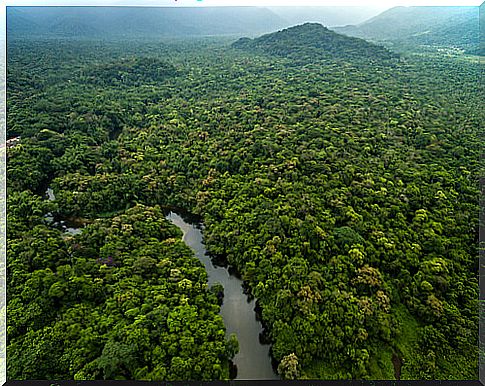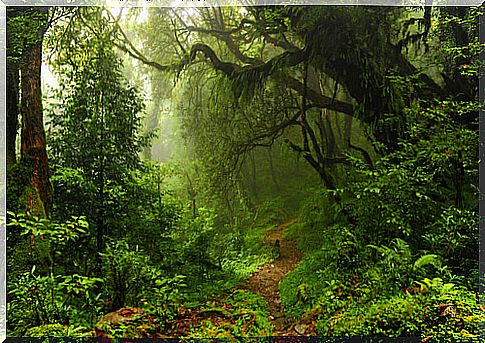Temperature And Habitat In The Rainforest

The jungle or jungle is a typical biome of the tropical and subtropical regions. Among its large trees and its characteristic humidity, we find the richest biodiversity of fauna and flora on our planet.
There are many species that find their habitat in the jungle; Therefore, it is an essential biome for the preservation of life on Earth.
Unfortunately, forests have been intensely devastated throughout our history. Despite being the oldest and most extensive biome on our planet, today it only covers 6% of the continental territory. To better understand the importance of this habitat, we will analyze the types of forest and the forms of life that exist within it:
Types of jungle
As we have mentioned, forests are typical biomes of tropical and temperate climates that present high biodiversity. Therefore, there are several possible classifications for the different jungles that cover our planet.

If we want to make a more detailed analysis, we can talk about Ecuadorian, subtropical tropical, mountainous, low-terrain forests, etc. To make the classification of forests easier, we usually speak of two generic types of forests: tropical and temperate.
The tropical jungles
The tropical forests are the most exuberant and are located in regions of tropical and Ecuadorian climates. Its fauna and flora find optimal conditions of development; These are warm and humid habitats, with temperatures that vary from 21ºC to 30ºC. The rains are abundant during the summer and its annual variation is usually between 200 and 1 000 cm.
The most recognized tropical forest for its extension and biodiversity is the Amazon, located in South America. The Amazon rainforest spans various South American countries, such as Brazil, Ecuador, Colombia, and Peru.
Along with the above, we can also find tropical forests in Central America, Central Africa, southeast Asia, southern North America, Australia, West Africa, New Guinea and western India; all of them make up the largest and most varied biome on planet Earth.
Temperate rainforests
Temperate forests are not as abundant or extensive as tropical ones. They are mostly located in regions with a humid oceanic or humid subtropical climate, such as Japan, New Zealand, Australia, North America, Norway and the United Kingdom.
In the habitat of the temperate forest, we find species that adapt to mild and cool temperatures, which vary from 10ºC to 21ºC. In this climate there is a more balanced humidity, with rainfall of 150 to 500 centimeters a year. It can be said that the greatest diversity of temperate forests is concentrated in mountainous and coastal areas.

The habitat in the jungle: unique fauna and flora
The jungle habitat comprises a privileged fauna and flora, comprising thousands of species from the animal, plant and mineral kingdoms. It is precisely these different and complementary forms of life that make the jungle the biome with the greatest biodiversity on the planet.
The flora of the jungles
One of the characteristics of the jungle is its huge trees, which need years of growth to reach such heights. However, the flora of this biome also includes a wide variety of flowers, shrubs and ‘dwarf’ plants. In fact, it is estimated that 10 km² of jungle vegetation can host more than 2 000 different species.
Among the main plants, we can highlight: bromeliads, orchids, palm trees, ficus, ceiba trees, lianas, philodendrons and many shrubs. On the other hand, the importance of obtaining resins and latex from jungle vegetation can also be mentioned.
Jungle fauna
Another fascinating feature of jungle ecosystems is their high concentration of endemic and exotic species. In the Amazon rainforest, for example, we can find more than 100 unique animals in the world; from small insects to huge predators.
Beyond the exotic species, the fact is that the fauna that finds its habitat in the jungle is incomparable. While many species live in trees, others share the soil and there are even some nomadic animals.
In the jungle biodiversity, we find a remarkable variety of insects, such as butterflies, ants, flies, bees, beetles, etc. On the other hand, the variety of amphibians, such as frogs, toads and salamanders, is also typical of the fauna in the jungles.
Also noteworthy in this habitat are the various species of reptiles, such as snakes, crocodiles, alligators and turtles ; Among mammals, we find monkeys, jaguars, bats, etc. And we must not forget the exotic tarantulas and poisonous scorpions of the jungle habitat.









